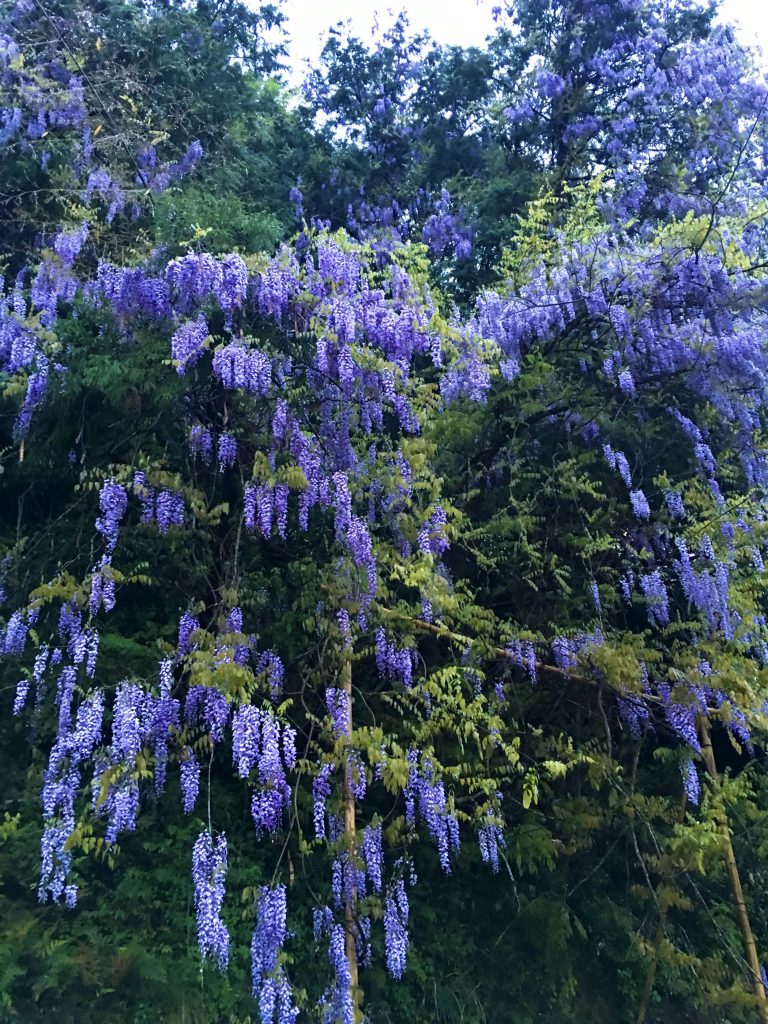
There are two types of wisteria in Japan, Yamafuji, which grows naturally in mountains all over Japan except Hokkaido, and Fuji (also known as Nodafuji), which grows naturally in western Japan west of Kinki. Yamafuji has a deep purple flower color and a short, chunky shape, while the color of the flowers of Fuji is light purple to reddish purple, and the inflorescences hang down for a long time, sometimes exceeding 1 meter. These two kinds are mixed in the Kansai area. Fuji is a wide variety of products with human intervention. The biggest difference between Fuji and Yamafuji is how to wind the vines, Fuji is left-handed and Yamafuji is right-handed. However, the problem is complicated, and there are some that explain the opposite. Yamafuji is a plant that is distributed in low mountains and forests and wraps around large trees to climb, but this can cause the wrapped plants to die. The fertile Yamafuji can interfere with the photosynthesis of other plants to tight and knock down. Due to its high fertility, its distribution is gradually expanding.
日本には二系統の藤があり、北海道を除く全国の山に自生しているヤマフジと近畿以西の西日本に自生しているフジ(別名ノダフジ)です。ヤマフジは花の色が濃い紫色で、花房が短くてずんぐりとした形をしているのに対して、フジは花の色は淡紫から赤みを帯びた紫色で、しかも花房が長く垂れ下がり、時には1メートルを超すのもあります。関西辺りではこの二系統が混在しています。フジは人の手が加わった分多品種です。フジとヤマフジの最も大きな違いは蔓の巻き方で、フジは左巻き、ヤマフジは右巻きです。ところがややこしいことに、これとは全く逆の解説をしているものもあります。ヤマフジは低い山や林に分布し、大木に巻き付いて登っていく植物ですがそのせいで巻き付かれた植物が枯れてしまう場合もあります。繁殖力の旺盛なヤマフジは他の植物の光合成を阻害してしまうことがあるのです。また締め付けて倒してしまうこともあります。その繁殖力の高さから少しずつその分布を広げています。
